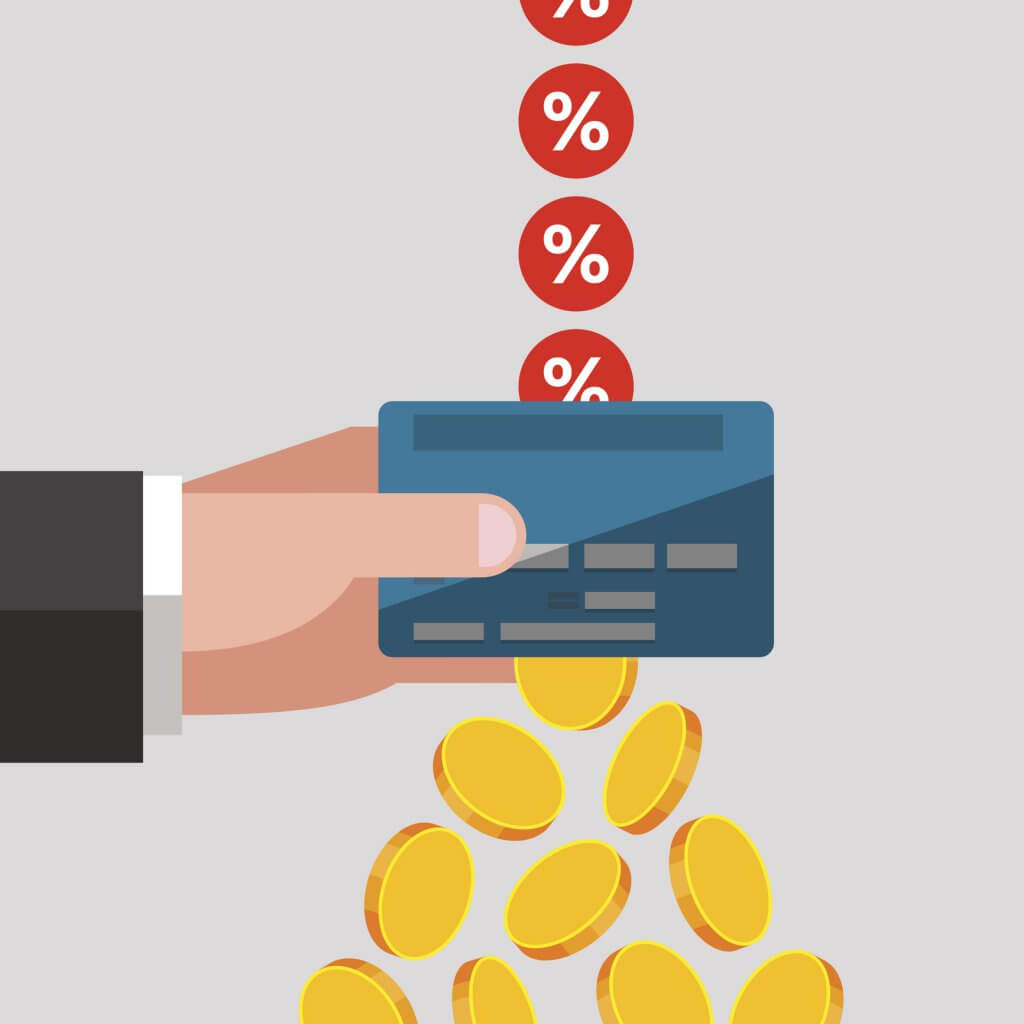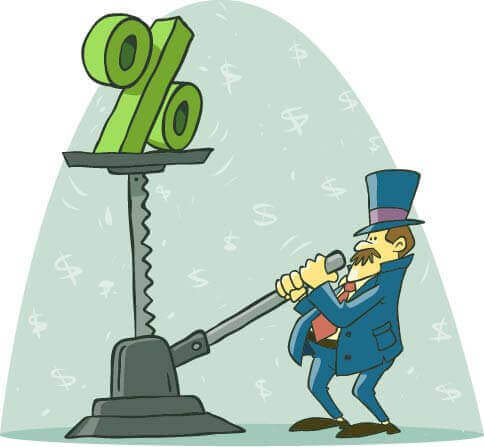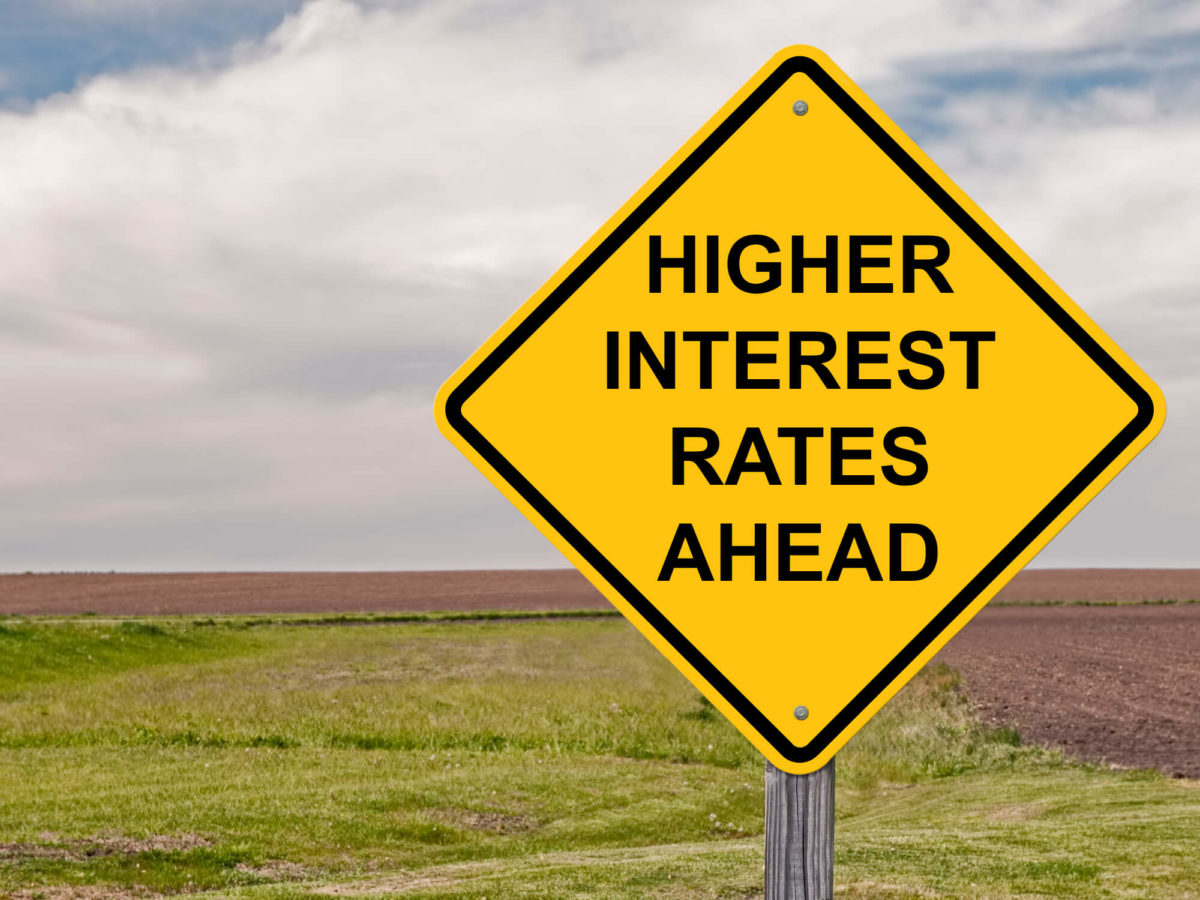Option 1: Talk to your creditors to negotiate lower interest rates
This should be a task that you do routinely, at least once every few years. Never be satisfied with the rate you have on an existing account. If you haven’t talked to a creditor in a while, give them a call to ask a customer service representative for a rate reduction. You will have more success if you…
- Have been a loyal customer for a number of years
- Your credit score improved since you opened the account or requested your last reduction
- You have not missed any payments
The customer service representative may need to pass you up to a supervisor to authorize the reduction. It’s good to be armed with as much information as possible. So, refer back to the chart above or find current average credit card interest rates through another accredited online provider. This will give you a starting point for negotiations if you know how far off the average rate you are.
Credit card companies like to keep their customers happy. One way that they do that is to offer promotional interest rates to existing customers. They may offer you a lower promotional interest rate on purchases or even a specialty APR like a lower balance transfer interest rate.
“Take advantage of promotional interest rates when your credit card companies offer them,” says Gary Herman, President of Consolidated Credit. “You can use these lower rates to strategically manage your debt. Using a card that has a lower purchase APR or transferring balances to a card that offers 0% APR can be extremely beneficial.”
For example, in 2021 some credit card companies are offering 0% APR for up to 14 months on balance transfers. Their goal is to ensure they keep customers using their cards so they can continue generating revenue. The benefit for customers is that it offers an easy way to consolidate debt interest-free without getting a new balance transfer card.
Find more tips for negotiating lower interest rates »
Option 2: Consider balance transfers while your debt is still manageable
Let’s say you run up a $3,000 balance on a cash-back reward credit card that has 21% APR. For most budgets, that amount of debt will take at least a few billing cycles to pay off. Even if you pay more than the minimum payment or make fixed payments, interest charges will apply. And the longer it takes to reach zero, the more money you burn.
If you add $50 extra on top of the minimum payment, you cut interest charges to $1,450. But it still takes you over four years to eliminate the debt. And, if you make $300 fixed payments, you reduce charges even further; down to just $326.79.
Still, even with fixed payments it costs more than 10% of what you borrowed to repay what you owe. In this case, it still takes a year to pay off the debt, giving the creditor 12 opportunities to apply interest charges.
In many cases, it may be financially beneficial to transfer that balance to a 0% APR balance transfer credit card. With good credit, you can get a 0% promotion period of 12 months. Now make that same $300 fixed payment. You’ll be out of debt in 10-11 months instead of 12 without any interest charges applied. So, it’s faster and more cost effective.
Could you benefit from a credit card balance transfer? »
Option 3: Consolidate credit card debt with a personal loan
As we mention above, loans tend to have much lower interest rates versus credit cards. With your same credit score, you may qualify for a personal loan at 5% APR where you qualify for 15% APR on a credit card. So, it sometimes makes sense to take out a personal loan and use the funds to pay off your credit card balances. This is known as a debt consolidation loan.
Debt consolidation loans are often beneficial when you have too much debt to consolidate and pay off with a balance transfer. Paying off $3,000 in debt within 12 months is easy; paying off $30,000 in the same timeframe is not – the monthly payments would top $2,500.
Since most people don’t have that kind of cash available to pay off debt interest-free, then it makes sense to at least aim for a lower rate. If you can cut interest charges by two thirds from 15% to 5%, that makes it dramatically easier to pay off what you owe. Even if you keep your monthly payments the same, you’ll be out of debt much faster. You’ll also pay notably less interest as you work to reach zero.
Is a debt consolidation loan right for you? »
Option 4: Let professionals negotiate for you
All the options above, including negotiation, require that you have good credit and positive payment history. If you don’t, they’re less likely to work effectively. For instance, if you have subprime credit, you may not get approved at all for a balance transfer credit card. Even if you can get approved for a persona loan, the interest rate might be around 12%; that may not provide the rate reduction benefits you need.
In this case, you may need professional help to lower interest rates. This usually involves working with a consumer credit counseling agency. You enroll in a voluntary repayment plan called a debt management program. Then the credit counseling team negotiates to reduce or eliminate interest charges with each of your creditors.
Here is an example of how a debt management plan helped one client eliminate their debt:
How the Credit CARD Act affects APR and paying off your balances
In 2009, Congress passed the Credit Card Accountability, Responsibility and Disclosure Act (Credit CARD Act). Much of the law was geared towards regulating how and when a creditor could change the APR on a customer account. So, it stops creditors from increasing your rates without notice. It also establishes the process for removing penalty APR.
While the law protects consumers, it also includes language that can affect how your debts get repaid, based on APR. One key part of the law states that a creditor must apply an excess amount paid above the minimum payment to the part of the balance with the highest APR first.
This can affect you significantly if you’re paying more than the minimum required to pay off your balances faster. Here are a few examples of how:
- If you take out a cash advance on a card, it will generally have a higher APR applied than the rate for your standard purchases. This balance would get paid off first, which is good.
- On the other hand, if you get a balance transfer card to consolidate debt, you want to avoid making regular purchases on the card. Transfer cards tend to have lower APR and even 0% when you first open the account. If you use the card for regular purchases, then the payments you make would pay off those charges instead of the balance you consolidated. So, avoid using transfer cards for regular purchases.




